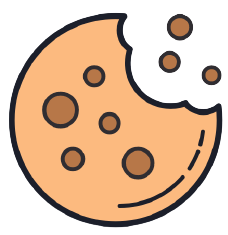THE SCIENCE BETWEEN MUSIC AND EMOTION.
Before you read this, take a moment to hum your favorite song or tune. What are you humming, and why? Have you always loved this son, or did your preference change over time? Why do some songs that you once disliked now seem appealing, while others have lost their charm? Why do most people experience such strong emotional reactions to music? And why does a song that seems uplifting to one feel depressing to another?
Let’s dive into these mysteries of music. To unravel this, we need to start at the top — your brain.
WHY DO WE LOVE MUSIC?
The answer lies in dopamine, the brain’s “feel-good” chemical, which is released when we listen to music that we enjoy. Dopamine is the same chemical that floods the brain when we win an award or receive praise. What’s more, music triggers dopamine release in a way similar to addictive substances. Another part of the brain, responsible for emotions like thrill and pleasure, also lights up in response to music.
So, do musicians have different brains than the rest of us? The answer is yes. Born musicians may have a unique brain structure that predisposes them to musical abilities. Musicians often have a density of grey matter in areas responsible for hearing, motor, control and memory. Their brains are more symmetrical, with well-connected right and left hemispheres. This structure allows them to blend analytical and artistic abilities. The right hemisphere of their brain interprets music, while the left processes language and words more effectively.
However, even if one isn’t born with this musical predisposition, early exposure and training can help develop musical abilities. For those who simply love listening to music, their brains tend to connect the areas responsible for identify tones and pitches with the regions that affect emotions. This creates a richer emotional experience. However, there is a small percentage of people as tone-deaf, whose brains do not react to music in the same way.
Just as nature gives our body structure, with each part performing a specific function, the brain is also organized into regions with distinct roles. For example, intelligence is not the result of the entire brain, but rather a specific area. The same apples to kindness, and of course, music. Different parts of the brain are designated for music comprehension and appreciation.
Consider this: If music is played at low frequencies (20-200 HZ) with dissonant tones and sudden changes, it stimulates the part of the brain associated with fear and anxiety. This is why horror movie soundtracks often use low-pitched drums and contrabass. On the other hand, mid-frequency music (600-2000 Hz) in major keys tends to make us feel happy and excited. Instruments like the piano, guitar, and tabla evoke these feelings. For nostalgia or melancholy, low-mid frequencies (200-600 Hz) with minor keys and slow tempos are ideal, often played by instruments like the cello, viola, or sitar. To feel relaxed and calm, music with high-mid frequencies (2000-4000 Hz) is recommended, featuring instruments like the flute, bansuri, or violin. For energy and joy, high-frequency music (4000-8000 Hz) often played with high-pitched drums, cymbals, or shehnai, can make you feel like dancing.
These effects, however, are not absolute. The brain’s response to music varies based on individual experiences and cultural context. For example, if you’ve danced joyfully to a particular song for years but suddenly hear bad news while that song is playing, your brain may start associating that song with anxiety.
If this happens more than once, that music may leave you feeling nervous in the future. In this way, individual conditioning and cultural background can override the brain’s natural responses.





